Hello and happy new year. I hope that 2014 is going very well for you so far. Here the kids are all back at school and I have gotten back to work in the studio.First of all I have made a couple of changes here to make it easier for those interested to follow my creative work. I have published a page specifically for following my professional activities on Facebook so you won't have to suffer personal posts there if you don't wish. It is separate from my personal FB profile. I have also included to the right here on the blog links for those who aren't on Facebook to know when I post via email and Twitter as you wish.I have a few creative projects on the go but on the easel today is work continuing my fascination with still life. In the last portrait I did there were roses and I became painfully aware of how difficult it is to capture a rose in paint. I have always intended to develop this skill and so now it seems appropriate to take the time while it is top of mind. I am using fabric roses and working to refine a limited palette I will put to use in one of my other current projects. With a few boards ready to work on I will do some variations of this still life. I may set up a "real" rose to paint from too because I'm sure there are a few very important differences in painting a fabric rose and a real rose- first being that with one you are painting fabric and with the other you are painting a living plant.One of the necessary processes in my painting is drawing the image before any of the painting begins. Painting from photo or drawn reference, I use a grid to copy and draw the image and this means transferring one 2D image to a 2D surface pretty much mathematically- one square=one square and I copy the lines accordingly. When working from a still life though, I am transferring a 3D image to 2D and it takes a different kind of process to work this way. A primary element for composition is an image's boundaries and on a 2 dimensional reference, say a photograph, I am able to crop the image very particularly and transfer these boundaries specifically to the board I am working on. From still life however it is more challenging to "crop" the image and create specific boundaries to reproduce on the board. 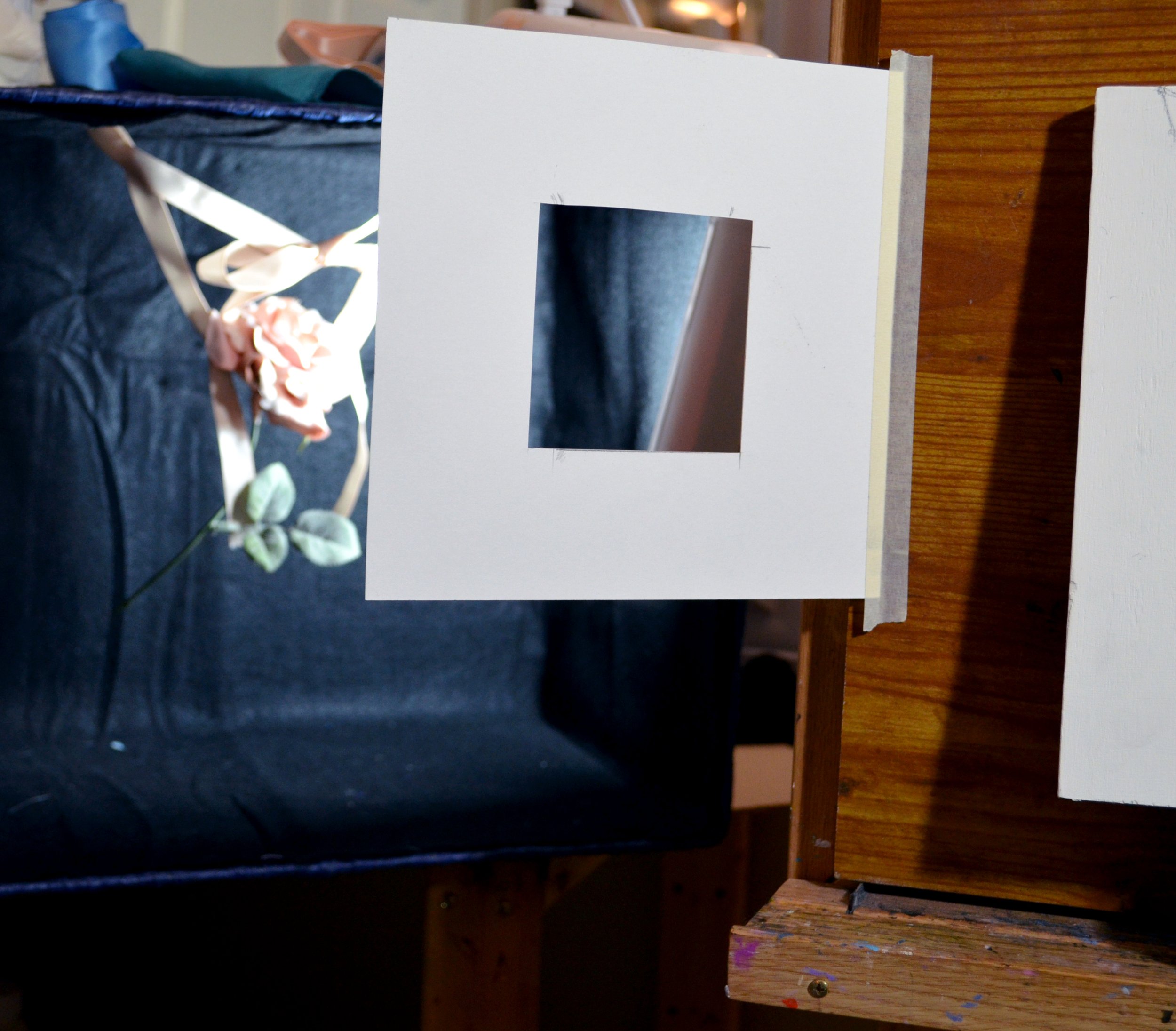 Once a still life was set I used a "cut out" the same proportions as my working surface to design a composition. Marks on the cut out let me line up the image precisely every time I looked at the still life.
Once a still life was set I used a "cut out" the same proportions as my working surface to design a composition. Marks on the cut out let me line up the image precisely every time I looked at the still life.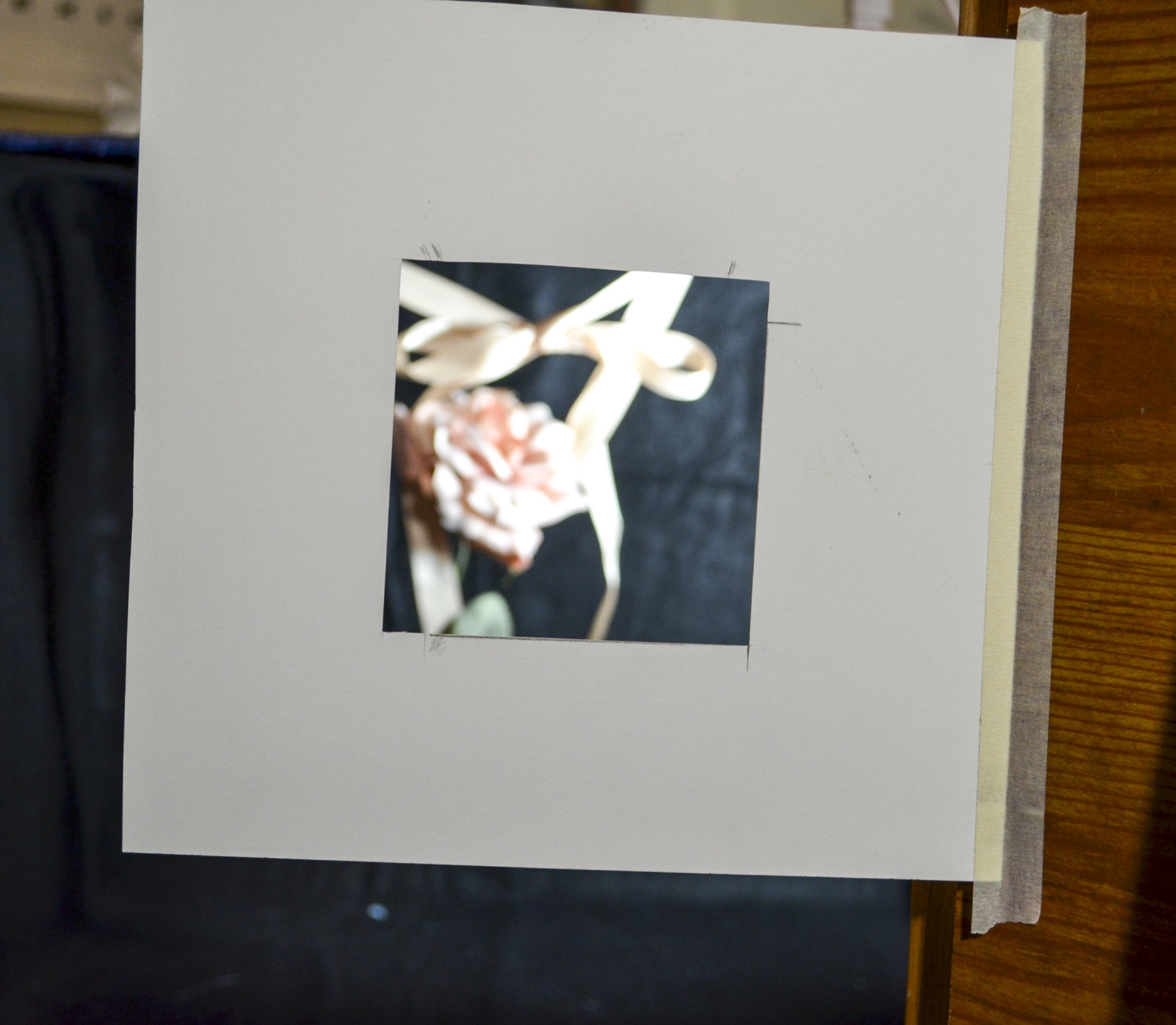 With the image designed the next issue was drawing to the correct proportions. On the other work (with a 2D reference) this is a simple process of measuring like for like on little gridded squares. Here though, I don't have a grid so I used a tool called a proportional divider to measure like for like. In these pictures you can see that I took a measurement with one side of the divider and then as I turn the tool around it gives an exact measurement proportioned larger for my drawing. The divider then guides me to make an copy of the still life as exactly right as my eye and hands will allow.
With the image designed the next issue was drawing to the correct proportions. On the other work (with a 2D reference) this is a simple process of measuring like for like on little gridded squares. Here though, I don't have a grid so I used a tool called a proportional divider to measure like for like. In these pictures you can see that I took a measurement with one side of the divider and then as I turn the tool around it gives an exact measurement proportioned larger for my drawing. The divider then guides me to make an copy of the still life as exactly right as my eye and hands will allow. 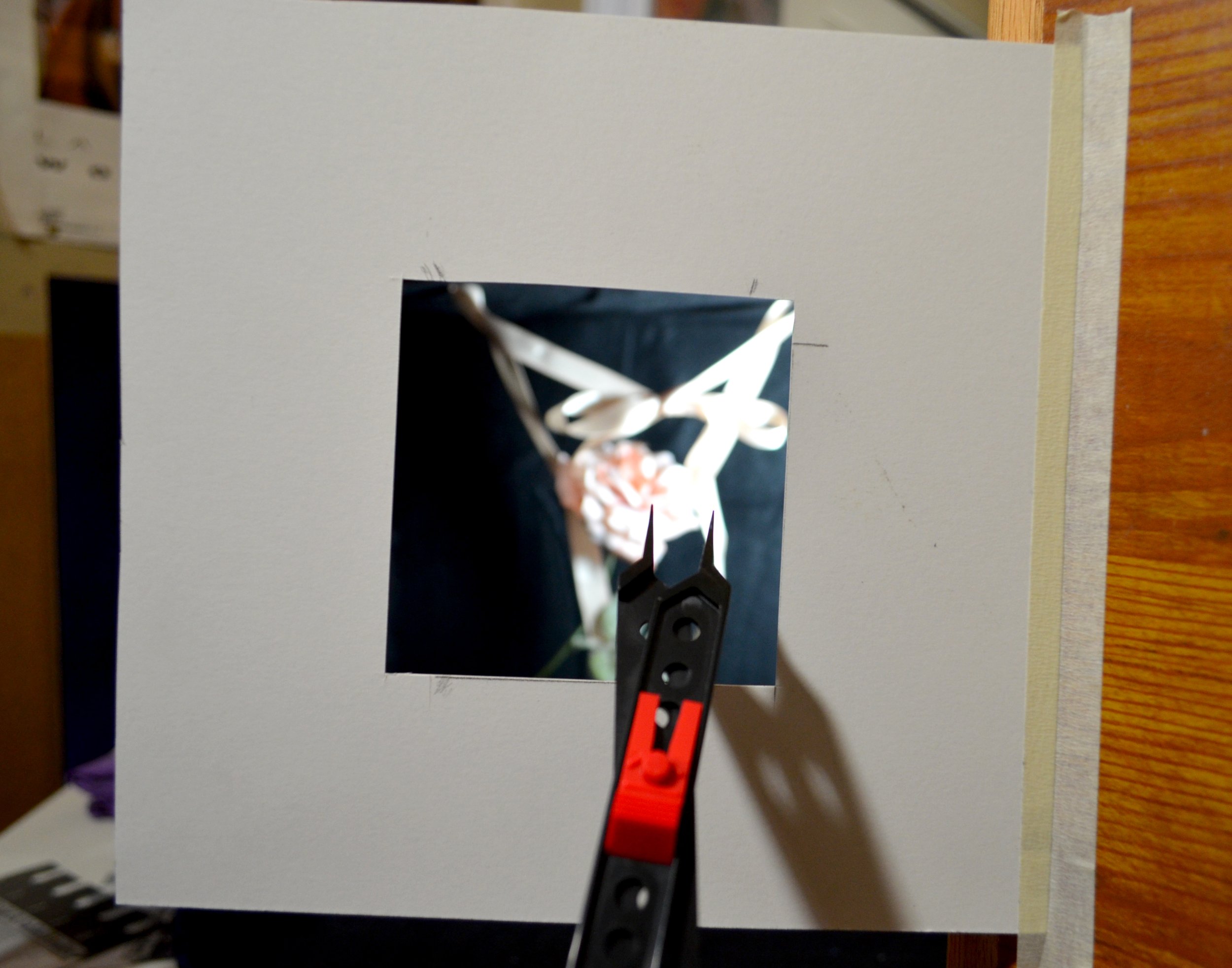
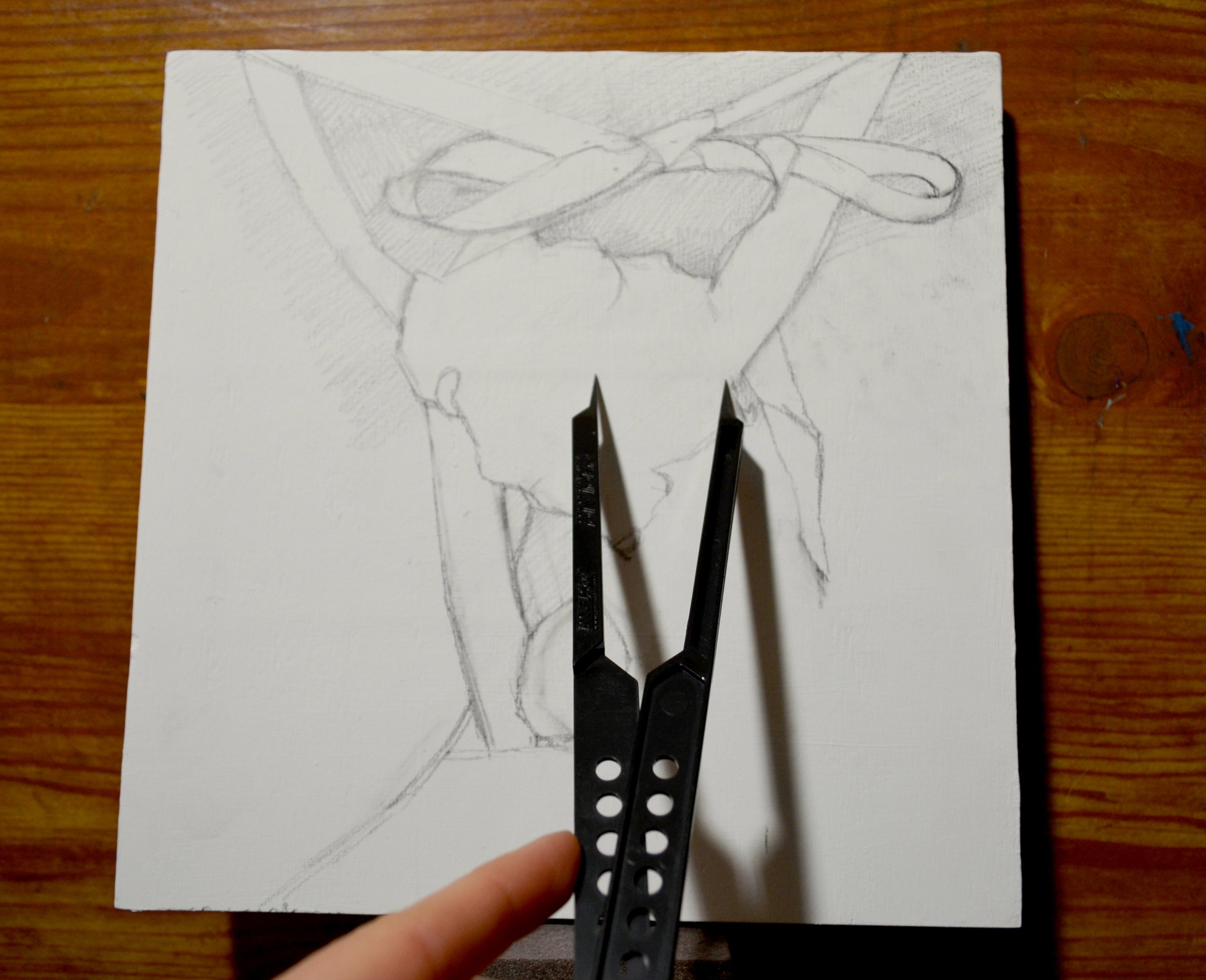
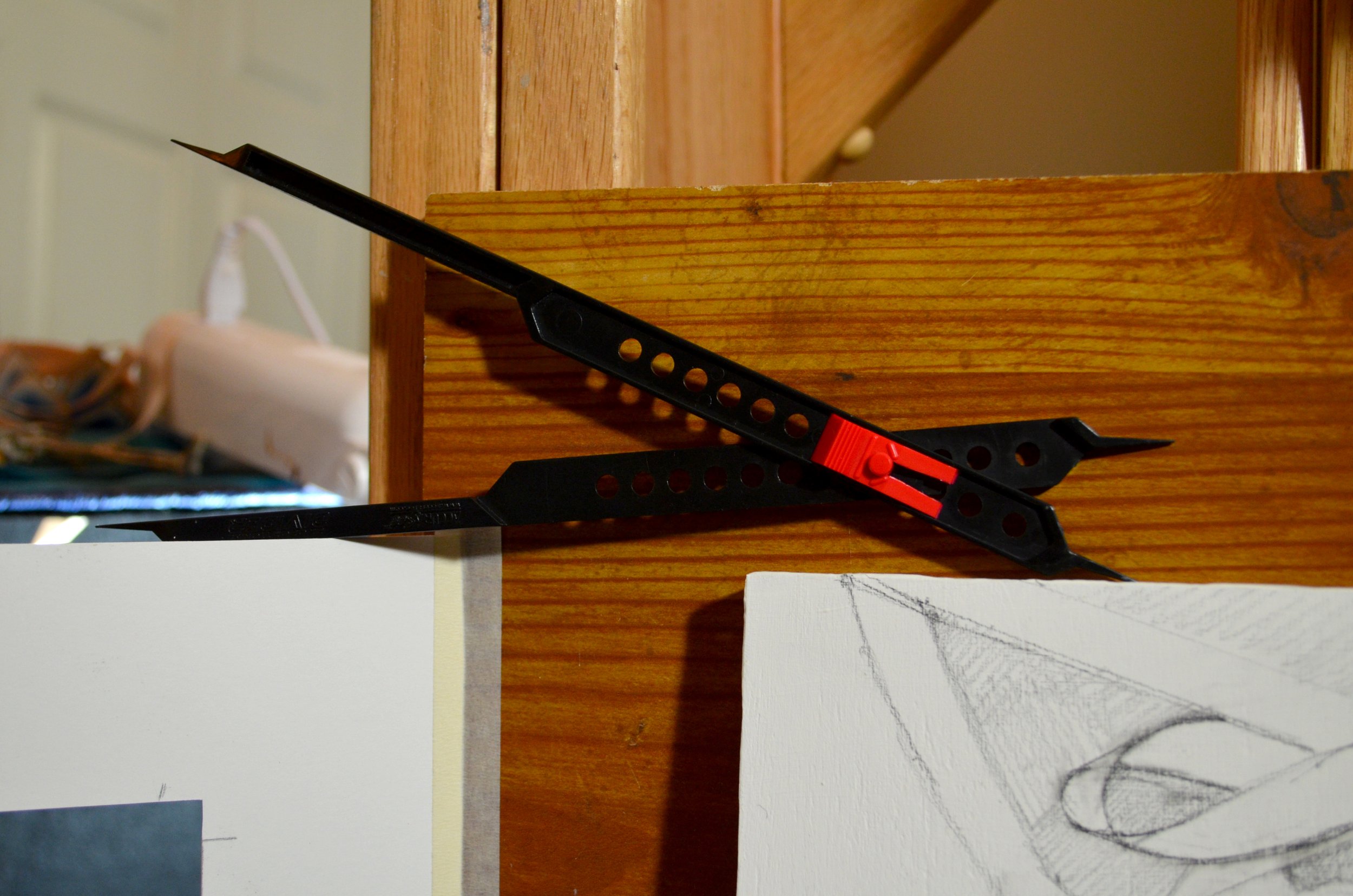 Once I had a detailed enough drawing to work from and then I put a coat of clear gessoe over the drawing before I began to paint.
Once I had a detailed enough drawing to work from and then I put a coat of clear gessoe over the drawing before I began to paint.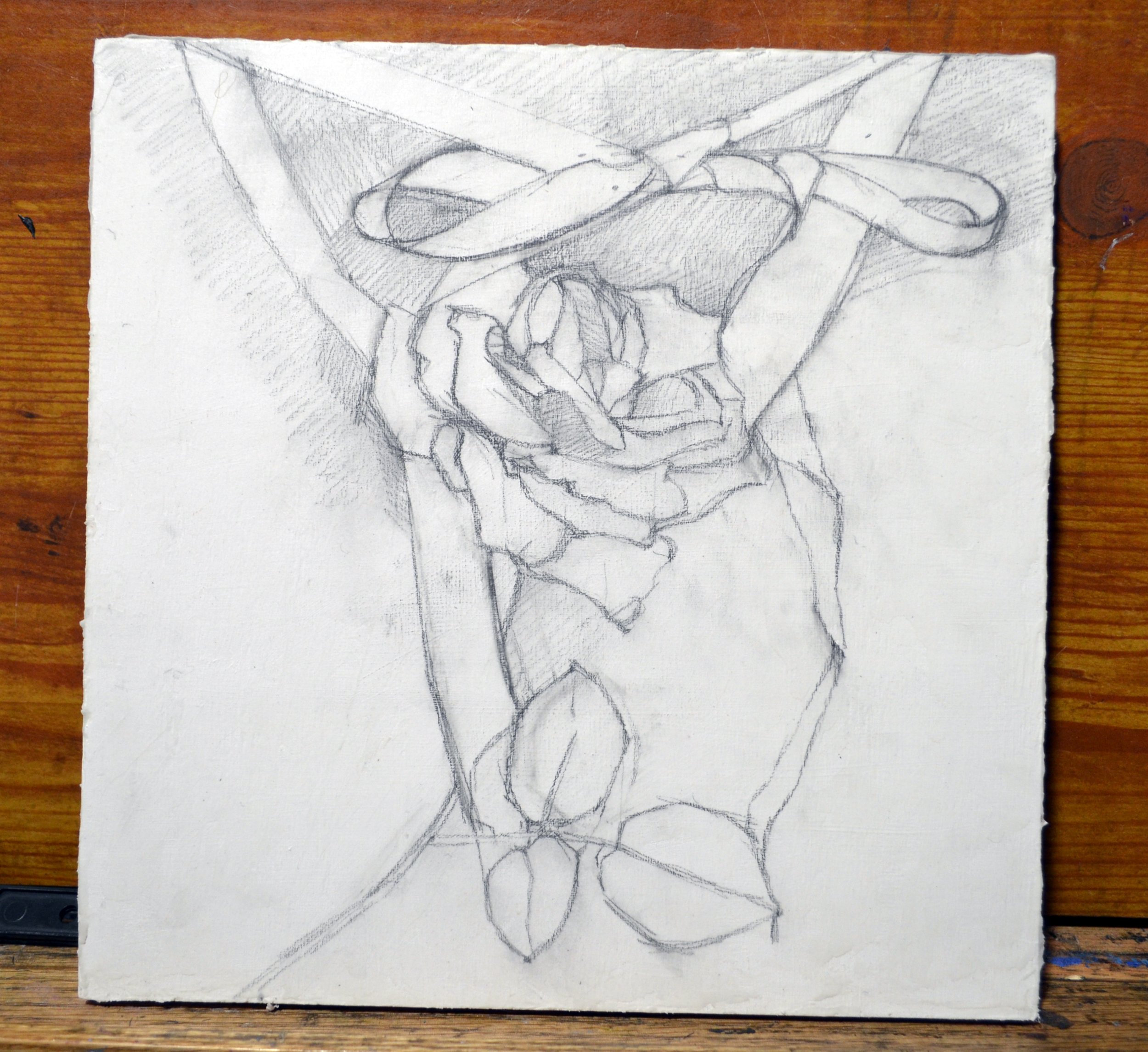
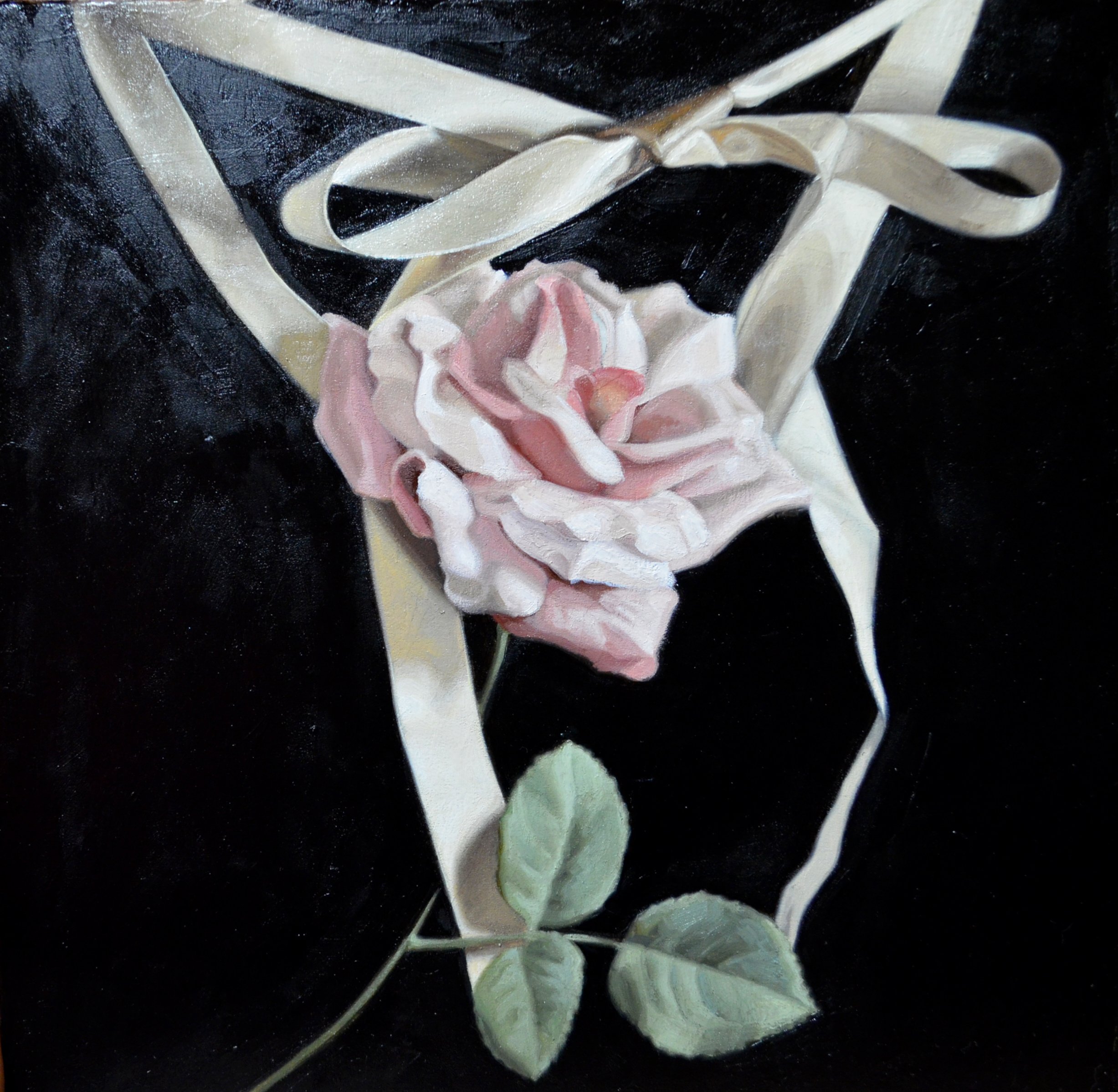
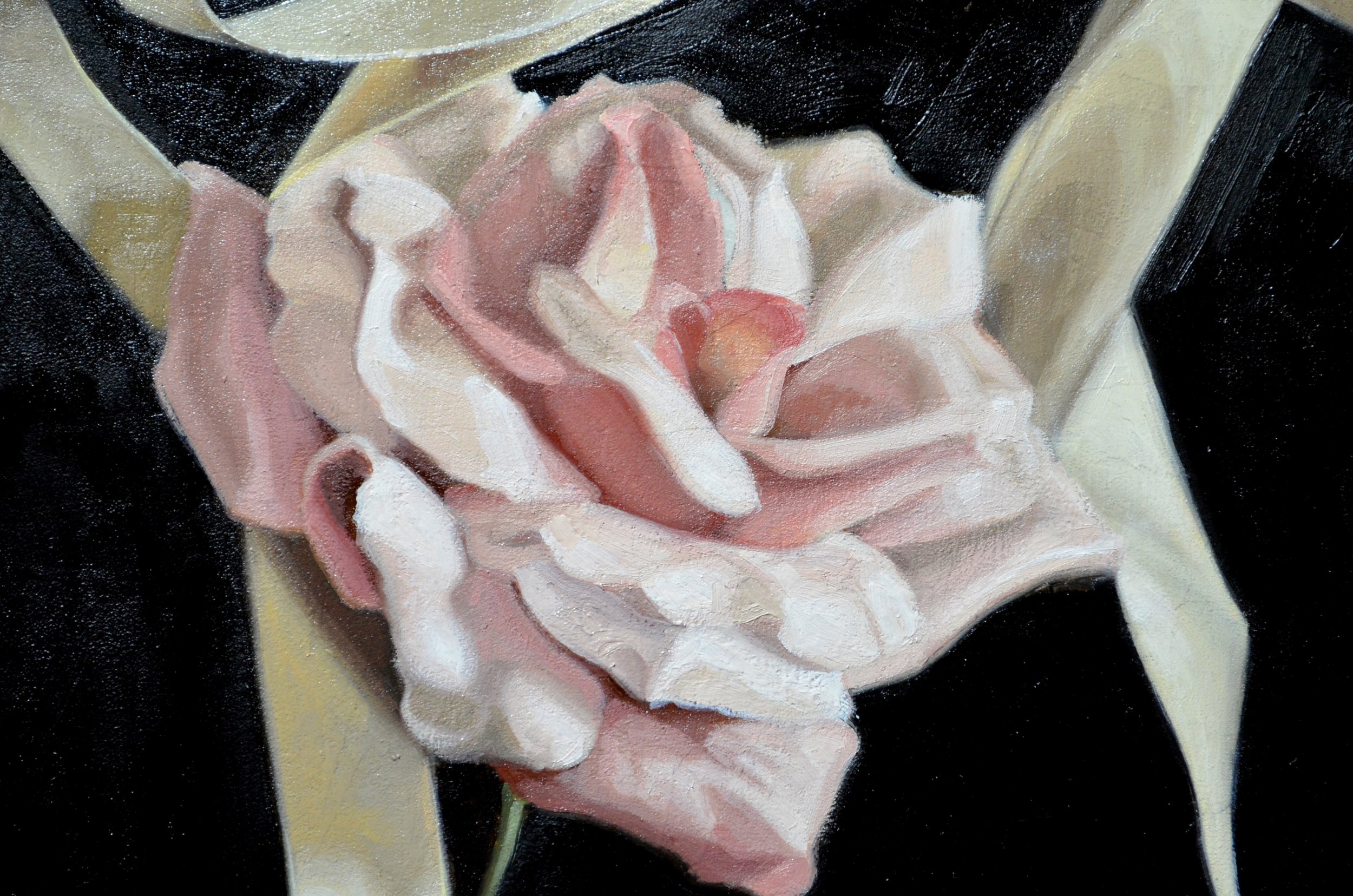 Here is the under painting.I will post again once the piece is complete in a week.Thanks for reading!
Here is the under painting.I will post again once the piece is complete in a week.Thanks for reading!
